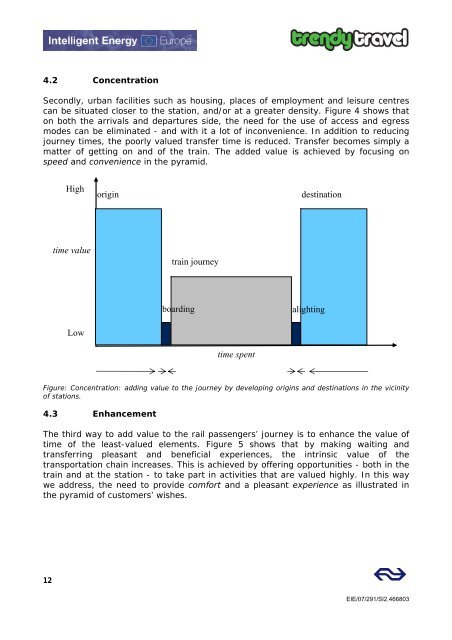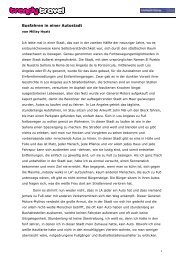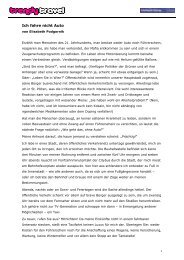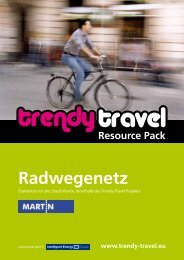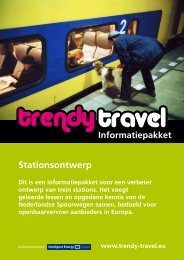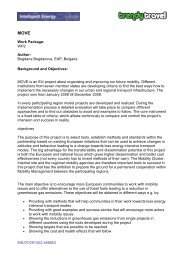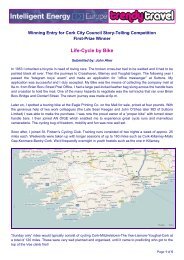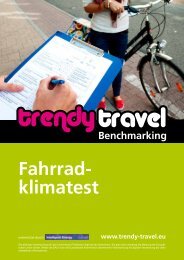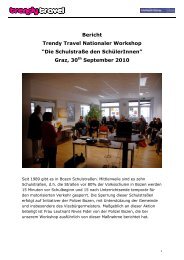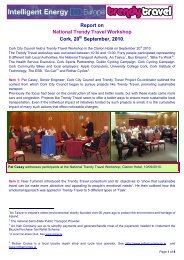Resource Pack: Railway Station Design - Eltis
Resource Pack: Railway Station Design - Eltis
Resource Pack: Railway Station Design - Eltis
Create successful ePaper yourself
Turn your PDF publications into a flip-book with our unique Google optimized e-Paper software.
4.2 Concentration<br />
Secondly, urban facilities such as housing, places of employment and leisure centres<br />
can be situated closer to the station, and/or at a greater density. Figure 4 shows that<br />
on both the arrivals and departures side, the need for the use of access and egress<br />
modes can be eliminated - and with it a lot of inconvenience. In addition to reducing<br />
journey times, the poorly valued transfer time is reduced. Transfer becomes simply a<br />
matter of getting on and of the train. The added value is achieved by focusing on<br />
speed and convenience in the pyramid.<br />
High<br />
origin<br />
destination<br />
time value<br />
train journey<br />
boarding<br />
alighting<br />
Low<br />
time spent<br />
Figure: Concentration: adding value to the journey by developing origins and destinations in the vicinity<br />
of stations.<br />
4.3 Enhancement<br />
The third way to add value to the rail passengers’ journey is to enhance the value of<br />
time of the least-valued elements. Figure 5 shows that by making waiting and<br />
transferring pleasant and beneficial experiences, the intrinsic value of the<br />
transportation chain increases. This is achieved by offering opportunities - both in the<br />
train and at the station - to take part in activities that are valued highly. In this way<br />
we address, the need to provide comfort and a pleasant experience as illustrated in<br />
the pyramid of customers’ wishes.<br />
12<br />
EIE/07/291/SI2.466803


